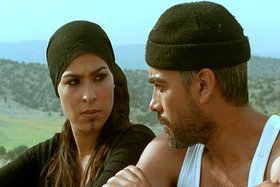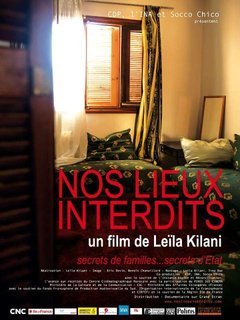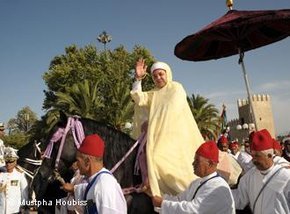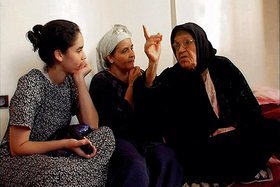The Difficulty with Taboos
At the beginning of September, the Zentrum Moderner Orient and the Arsenal – Institute for Film and Video Art in Berlin, Germany, organized a film festival entitled "Upheaval and Diversity – The Moroccan Film Days". The nine films screened during the event were produced between 2001 and 2010. During this period, a total of 120 film productions were completed in Morocco.
According to co-organizer Sonja Hegasy, the selection criteria for the Berlin programme was to present work that broke the silence on controversial issues in Moroccan society and to show that the country has been undergoing a gradual change over the course of many years.
Diversity of life experiences in Morocco
The Moroccan Film Days opened with a showing of Narjiss Nejjar's Les Yeux Secs (al-Ouyoun al-Jafa, France/Morocco 2003), a recipient of numerous prizes, which deals with the issue of prostitution in Morocco. Director Mohamed Cherif Tribak's first feature length film, Le Temps des Camarades (Zaman al-Rufaq, Morocco 2008), focuses on the conflicts between Marxist and Islamic student groups in the early 1990s.

In her documentary film Nos Lieux Interdits (Amakinouna al-Mamnouaa, France/Morocco 2008), Leila Kilani portrays the work of the truth commission set up to address human rights abuses under King Hassan II. Yasmine Kassari's film L'Enfant Endormi (Arraguad, Morocco/Belgium 2004) examines the lives of women left behind when their husbands go to seek work in Europe. Mirages (Ayam al-Wahm, Morocco 2010) by Talal Selhami combines elements of horror, thriller, and fantasy films to reveal the abyss of the contemporary work environment in the country. The programme was not only prolific in terms of topics, but also cinematic styles.
Tellingly aloof
Almost all of the films, however, seem aloof towards their characters and unfamiliar with the country or the topic of the film. What could be the reason for this? In part, the phenomenon can be explained by the fact that many of the directors do not live in Morocco and, in some cases, were born abroad.
These filmmakers have been especially targeted to make their films in Morocco, as the state has been investing in cinema production for the past few years. Morocco has long been a popular film location for historical Hollywood dramas. A whole industry has been built up in the oasis city of Ouarzazate with the goal of attracting foreign investment. Now, domestic film production is also meant to profit from this infrastructure.
There haven't been enough interested filmmakers in Morocco to spend the allotted funds exclusively within the country, which is why cineastes with a Moroccan immigrant background from abroad have been welcomed to apply for the film subsidies. At the same time, hardly any film can be completed solely on the basis of Arab financing. Co-productions with European parties are therefore necessary to ensure production costs.
Definitory power of history and politics

The dissonant aspects of the films might also be explained in social or political terms. In developing and emerging countries, access to financing for film production, an extremely expensive proposition, is in most cases limited a very narrow group of upper and middle class individuals with good connections to Europe. Accordingly, they make films that attract financing, usually on themes dealing with backwardness and poverty in the widest possible sense.
The films rarely provide an insider's view of any given situation, but, instead, social, economic, political, and ethnic conflicts find themselves written into the subtext of the film, making use of the definitory power of historical and political values.
The difficulty with breaching taboos is that although this can often be pertinent, there is the simultaneous tendency to simplify, sometimes falsify, and only rarely to analyse.
Les Yeux Secs, for example, is set in a remote Amazigh (Berber) village in the Atlas Mountains. For generations, only women have lived in the village. Men can only set foot here under a full moon and exclusively for money.
The three main characters, Hala, Mina and Fahd, are played by professional actors considered to be among Morocco's celebrities. The TV star and singer Siham Assif plays Hala, while Khalil Benchegra, who portrays Fahd, has played in main or major supporting roles in Hollywood films that have been shot in Ouarzazate. Raouia, who plays Mina, was last seen in European cinemas in Xavier Beauvois' Of Gods and Men.
All of the other performers were cast from three villages in the region. In the film, they only speak Amazigh, whereas the professional actors communicate in Arabic. During casting for the well-paid jobs as extras, the women were told that the film would deal with the issue of prostitution. Details were not discussed.

After the extras had viewed Les Yeux Secs in the cinema in the city, they realized that the completed film reduced the problem of prostitution to the Atlas Mountain region and thereby attributed the problem solely to Berber women. Thirty-five women, supported by eight men, attempted to have further screenings of the film banned.
Trafficking of women who are then sexually exploited is a massive problem in Morocco, although Moroccan women are primarily trafficked abroad in other Arab countries and in Europe. For years, the UNHCR has criticized the government for remaining inactive on the issue.
The Berber women had no real chance of success with their suit, as the director had concluded written contracts with the illiterate extras before the start of production and was thereby legally protected.
The region around Tizi Nisly, where the film is set, is primarily known in Morocco for the bloodiest uprising by Berber tribes against the French colonial powers. The region was subsequently punished with a 24 year long embargo, which was upheld after independence by the Moroccan Arab royalty. To this day, the Berber population is still fighting to obtain basic infrastructure such as roads, running water, and electricity.
Wilfully ignoring facts
In her documentary film Nos Lieux Interdits, Leila Kilani focuses on four families of former political prisoners and victims of torture under the reign of King Hassan II. The current king, Mohammed VI, wants to examine the political injustices that took place under his father and has set up a truth commission. The commission is controversial in that perpetrators are not allowed to be named in statements by witnesses.

The documentary, financed by the Moroccan truth commission and various French film subsidy organisations, opens with historical information for the viewer. Among other things, it states that "in 1956, the Kingdom of Morocco achieved its independence. Since the early 1960s and increasingly in the 1970s and 1980s, Moroccan authorities have employed torture and kidnapping in order to silence opposition."
There is no mention of the fact that previously, under French colonial rule, and later, under the current monarch, political imprisonment, violence, and torture in prisons took place and takes place now. This is a clear political stance, which raises many questions about the film.
Film programmes about foreign cultures by their very nature present small, often distorted excerpts of life that should be accompanied by critical material. When a film is given a proper context and setting, then even isolated examples can offer a deeper glimpse into the complexities of a country.
Irit Neidhart
© Qantara.de 2011
Translated from the German by John Bergeron
Editor: Lewis Gropp/Qantara.de